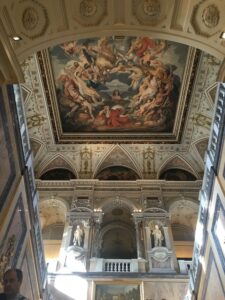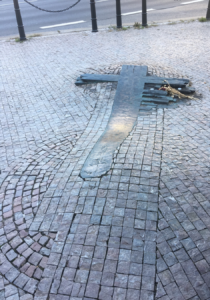Natural History Museum Vienna was designed by Gottfried Semper and Carl Hasenauer and built in the decade following 1871. It was commissioned by Emperor Franz Joseph who opened the museum in 1881. On the façade are emblazoned the words “To the realm of Nature and its exploration”, and was originally supposed to be part of the Imperial Forum but the forum was never completed. The museum itself is an architectural wonder, with elaborate and detailed decorations, from sculptures to wall murals.
While the building is beautiful in design, it also one of the first museums that taught evolution as well as being one of the first museums created to follow the principles of the Enlightenment. Maria Theresa recognized the financial potential of natural sciences for her empire and consequently brought a famous mineralogist to work at the museum. This marks the beginning of an era of scientific expeditions designed to explore and exploit the natural world. The museum is now stuffed with the acquisitions of earlier expeditions to the point of bursting.
The Natural History Museum Vienna is important for reasons of scientific research, however it is also important in Vienna socially and culturally. It has been accessible to the public since the death of Franz Joseph, giving everyone access to the sciences. This is an important cultural phenomenon as it gives the public access to things that would only have been seen by the wealthier classes. Though it provided an equality across the board for access to science, it also was a statement of power. It seemed to ask the question that if this advanced of science and rarity of samples could be viewed by the average Joe, what was being viewed by the wealthy elite? In modern Vienna, however, the museum is an amazing place to take kids on field trips, to do research or to spend cultural funds while studying abroad.
(All of the facts for this paper were gathered from the Natural History Museum Vienna’s Website.)



























